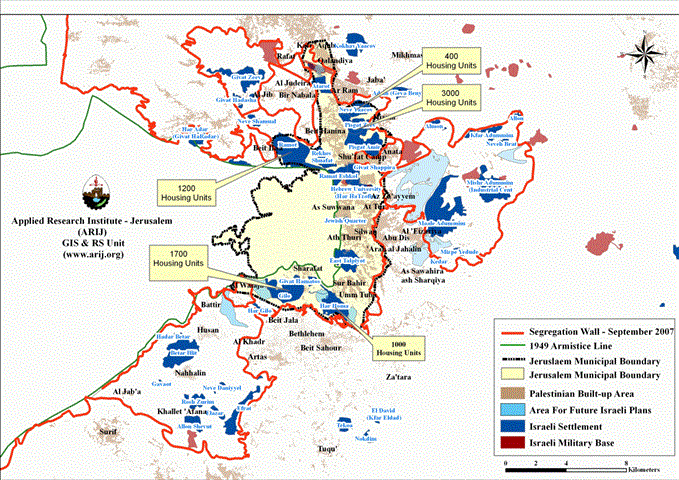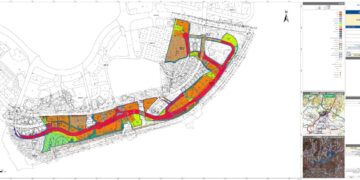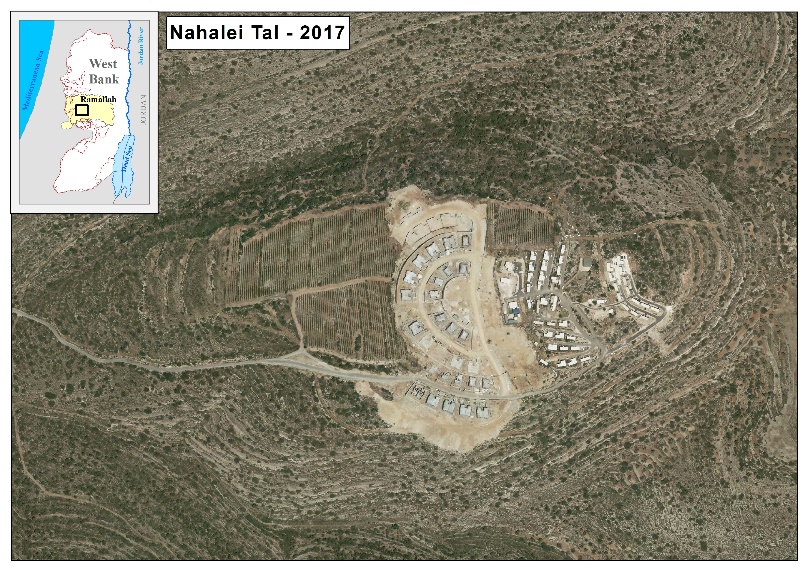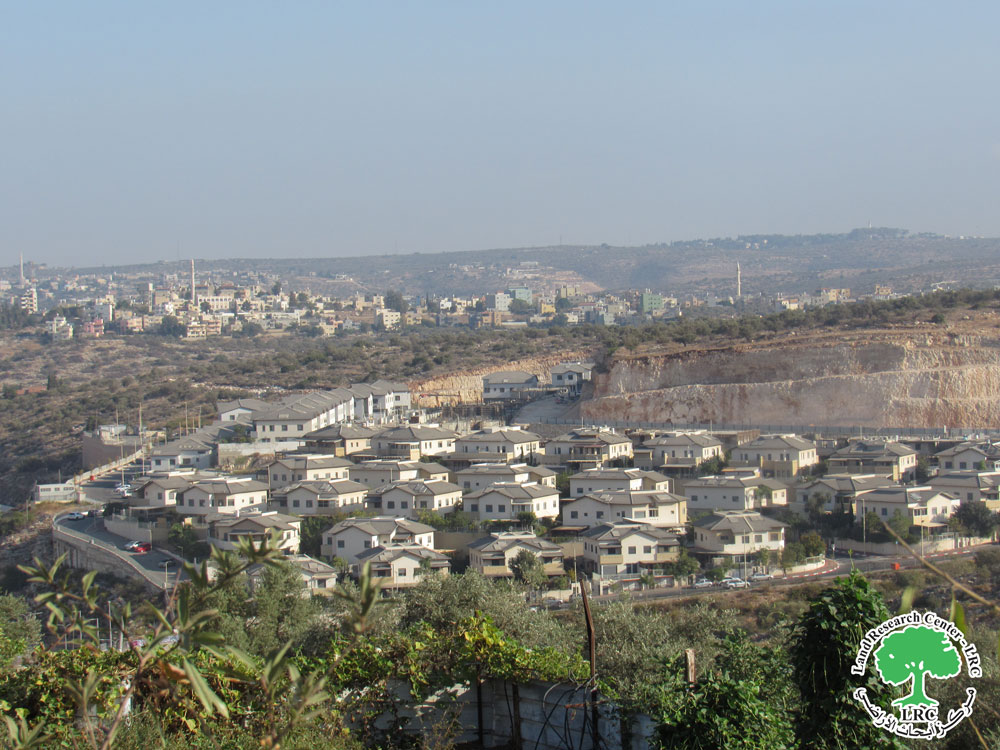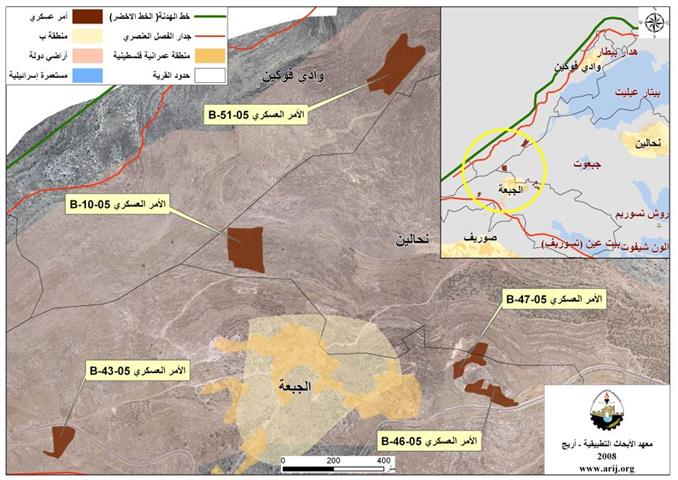In a proactive step, and as a response to the international pressure to freeze construction and expansion of West Bank Settlements, the Israeli Ministry of Housing and construction, along with the Israeli Municipality of Jerusalem decides to resume construction in East Jerusalem settlements under what it claim natural growth as reported by Israeli Channel 2. The decision was to add 7300 new housing units in five Israeli settlements located within Jerusalem Municipal Boundary. The settlements are Har Homa, Gilo, Pisgat Ze'ev, Neve Yacoov and Ramot. Table 1 details the distribution of Housing units to the five settlements along with a glance about each settlement.
|
Table 1: Distribution of Housing Units to Israeli Settlements inside Occupied Jerusalem city |
|||
|
No. |
Settlement |
No. of Housing Units |
Glance About the settlement |
|
1 |
Har Homa |
1000 |
Located south of Jerusalem city. It was established in 1997, on lands originally confiscated from Beit Sahour, Bethlehem, Um Tuba, and Sur Baher communities. The settlement is a home to 4610 Israeli settlers and occupies a total land area of 2205 dunums. |
|
2 |
Gilo |
3000 |
Located south of Jerusalem city. It was established in 1971, on lands originally confiscated from Beit Safafa, Sharafat, Beit Jala, and Al Walajeh communities. The settlement is a home to 32000+ Israeli settlers and occupies a total land area of 2738 dunums. |
|
3 |
Neve Yacoov |
400 |
Located north of Jerusalem city. It was established in 1972, on lands originally confiscated from Hizma and Beit Hanina communities. The settlement is a home to 21410 Israeli settlers and occupies a total land area of 1241 dunums. |
|
4 |
Ramot |
1200 |
Located northwest of Jerusalem city. It was established in 1973, on lands originally confiscated from Beit Hanina, Beit Iksa, An Nabi Samuel and Lifta communities. The settlement is a home to 40000 Israeli settlers and occupies a total land area of 3383 dunums. |
|
5 |
Pisgat Ze'ev |
1700 |
Located north of Jerusalem city. It was established in 1985, on lands originally confiscated from Beit Hanina and Hizma communities. The settlement is a home to 41210 Israeli settlers and occupies a total land area of 1546 dunums. |
|
|
Total |
7300 |
|
Source: ARIJ GIS Database 2008
The aforementioned five settlements are located within the Israeli Jerusalem Municipal boundary, which was illegally redrawn and expanded on the expanse of some 28 Palestinian communities following Israel's occupation of the West Bank and the Gaza Strip in 1967. Table 2 details the Palestinian communities which were affected by the established of the five aforementioned settlements.
|
Table 2: Palestinian Communities affected by the establishment of the Five Israeli settlements |
||
|
Settlement Name |
Palestinian Community |
Area of Lands confiscated |
|
Gilo |
Beit Safafa, Sharafat and Al Walajeh |
1622 |
|
Beit Jala |
1116 |
|
|
Total |
2738 |
|
|
|
|
|
|
Neve Ya'cov |
Hizma |
505 |
|
Ar Ram |
102 |
|
|
Beit Hanina |
634 |
|
|
Total |
1241 |
|
|
|
|
|
|
Pisgat Ze'ev |
Hizma |
148 |
|
Beit Hanina |
1397 |
|
|
Total |
1546 |
|
|
|
|
|
|
Har Homa |
Sur Baher , Um Tuba |
859 |
|
Beit Sahour |
416 |
|
|
Bethlehem |
930 |
|
|
Total |
2205 |
|
|
|
|
|
|
Ramot |
Beit Hanina |
647 |
|
An Nabi Samuel |
8 |
|
|
Beit Iksa |
1349 |
|
|
Lifta |
1379 |
|
|
Total |
3383 |
|
|
|
|
|
|
Total |
Grand Total |
11112 |
Source: ARIJ GIS Database 2008
Previous Israeli expansion Plans in Jerusalem city
Right about the time of the Annapolis meeting, which was held in the US state of Maryland on the 26th of November 2007 under the supervision of the US President George W. Bush and with the presence of the Israeli Prime Minister Ehud Olmert and the Palestinian President Mahmoud 'Abbas; the Israeli Ministry of Housing, The Jerusalem Municipality and the Israeli Land Administration announced about plans and tenders to add new housing units to existing settlements inside Jerusalem city and plans to establish new neighborhoods inside the city. In reality, these announcements are 'encoded messages' not to include Jerusalem city in the final status negotiations based on the “Road Map,” which requires Israel to freeze all settlement activities in the West Bank including occupied East Jerusalem city. Below is a list of events that took place following Annapolis Meeting until the date of this article.
On December 4, 2007, the Israeli Ministry of Housing and Construction issued tenders for 307 new housing units in Har Homa settlement (Abu Ghneim) southeast of Jerusalem city. Later on December 15, 2007, the Israeli authority announced about a plan to construct 150 housing new housing units near Jabal Al Mukkabir southeast of Jerusalem city; this is in addition to 7000 housing units to ‘Ein Ya’al area inside the 1949 Armistice Line (Green Line) on lands confiscated from Al Walajeh Village located southwest of Jerusalem city.
The Israeli plans did not stop at that; on December 18, 2007, the Israeli Ministry of Housing and Construction revealed that the new neighborhood, which was sanctioned plans to the “Atarot” settlement, which to include 11000 new housing units. The plans for the settlement north of Jerusalem city, near Qalandyia Airport came to about in February 2007. On December 23, 2007, the Israeli Ministry of Housing revealed that it has allocated some 18 millions Euros from its 2008 budget to expand Ma’ale Adumim and Har Homa settlements located east and south of Jerusalem city respectively. The Ministry plan is to add 500 units to Har Homa settlement whereas Ma'ale Adumim will receive another 240 new housing units.
On December 30, 2007: The Israeli Land Administration issued tenders to build 440 new housing units in Armon Hanatziv neighborhood in East Talpiot settlement located south of Jerusalem city. The settlement was established in year 1973 on lands originally owned by Palestinians of Sur Baher and Jabal Al Mukabbir. Today, the settlement stands on 1829 dunums of lands and houses more than 15000 Israeli settlers.
A week earlier to the announcement of the East Talpiot settlement's plan, the Israeli Land Administration revealed its proposal to construct Hotels in Gilo settlement located southwest of Jerusalem city over six dunums of lands, and indicated that the hotels maybe turned into residential buildings when needed.
Later on January 7, 2008, a group of the Israeli right- wing activists claimed that they acquire some 20 dunums of lands located in close parameters east of Gilo settlement and opposite to 'Aida Refugee camp north of Bethlehem city to establish new neighborhood there. Palestinian residents living near the targeted area stated that the targeted land belong to them but were isolated by the construction of the Segregation Wall since 2005 when they have been denied access to them.
Furthermore, on January 8, 2008, the Israeli Jerusalem Municipality has approved a plan to add 60 new housing units to Ma'aleh Zeitim Jewish quarter in the Palestinian Ras Al ‘Amoud neighborhood in East Jerusalem city where 51 Jewish families currently live. These families were brought into the place some 15 years ago with the support of the Jewish-American 'Irwing Meskovetch' (in California: AKA; Bingo King) who claimed his ownership of the lands at that time. The construction process went into operation a week later on January 15, 2008.
On January 16, 2008, Eleven Jewish families guarded by Israeli police took over 11 Palestinian houses owned by Al Baydoun and Al ‘Ajlouny families in Silwan town and Wadi Al Hilwa area. It was also reported that two apartments and 5 dunums of lands in Al Saloudha area near Al Magharbeh gate were equipped with cameras and security equipments by the Israeli Committee 'Al ‘Ad' who claim ownership of these houses.
On January 28, 2008, a Jewish right wing organization announced about plans to add 200 new housing units to Shim’on Tsedeq in Al Shiekh Jarrah neighborhood in east Jerusalem. About forty Palestinian families live in the area where their houses are threatened with demolition as to make room for the construction of the 200 units. The new plan is expected to be constructed on 18 dunums of lands. The neighborhood is currently inhabited by 7 Jewish families.
To conclude
The decision to add the new housing units came despite the Israeli Prime Minister's proclamation that any settlement expansion activity in the West Bank including Jerusalem should be ratified by him including what is so called 'natural growth'. Officials in the Israeli Ministry of Housing and Construction denied their knowledge of the Israeli Prime Minister's proclamation and claimed that they did not receive any written/official memorandum regarding this issue. In the same context, and in a meeting for the subsidiary committee for security and external matters, the representative of the Israeli Ministry of Defense stated that 'we don't have such communication' in response to a question whether it's prohibited to build new constructions in East Jerusalem settlements.
Uri Lublinsky, mayor of the Israeli Municipality of Jerusalem was dissentient to Olmert's decision to freeze settlements' expansion activities in the West Bank particularly in East Jerusalem and stated 'East Jerusalem neighborhoods are not settlements.' In addition, Mr. Lublinsky was clear enough in his meeting with the USA President George W Bush on January 9, 2008 that 'Jerusalem should remain unified', showing no intention that he would ever relinquish any part of Jerusalem for final status negotiations with the Palestinians.
On its website, the Israeli Municipality of Jerusalem revealed on the 23ed of January 2008 its plan to build 40,000 new housing units in Jerusalem city under what it calls a 'house for each worker.' The website also tells that 8,000 units have been already sanctioned, thus presenting the asymptotic between the two numbers 7,300 and 8,000.
The Israeli colonization plans aim to create de-facto realities in East Jerusalem that cannot be changed in the future, at the same time, to make a distinction between the settlements in the occupied West Bank and those inside the occupied city of East Jerusalem to renege the Israeli government from their obligations under the Road Map to freeze settlements' expansion activities including the 'natural growth.'
The legal status of Jerusalem
According to the United Nation's Security Council Resolution 242 of 1967, 'Israel must withdraw from all the territories it occupied in its aggression in June 5, 1967' and also ensures the Illegality of all of the Israeli procedures taken by the Israeli Army including the confiscation and the capture of Palestinian lands and properties during and after the war. Therefore, all of the Israeli settlements, built on the Palestinian lands recognized occupied territory because of the 1967 war, including East Jerusalem, are Illegal.
UN Resolution 446 issued on March 22, 1979 calls on Israel to rescind its previous measures and to desist from taking any action which would result in changing the legal status and geographical nature and materially affecting the demographic composition of the Arab territories occupied since 1967, including Jerusalem and, in particular, not to transfer parts of its own civilian population into the occupied Arab territories’.
UN Resolution 452 issued in 1979 calls upon the Government and people of Israel to cease, on an urgent basis, the establishment, construction and planning of settlements in the Arab territories occupied since 1967, including Jerusalem.'
Furthermore, the Forth Geneva Convention states in Article 49 that 'The occupying power shall not deport or transfer parts of its own population into the territories it occupies.' Article 174 of the same convention also “prohibits the 'extensive destruction and appropriation of property not justified by military necessity and carried out unlawfully and wantonly.'
Article XXXI, Oslo II, 1995: 'Neither side shall take any step that will change the status of the West Bank and the Gaza Strip.
Finally the Roadmap signed on April 30, 2003, between Israel and the Palestinians (originally developed by the United States, in cooperation with Russia, the European Union, and the United Nations (the Quartet)) under which the Israeli Government agreed to freeze all settlement expansion and the natural growth as well as evacuating and dismantling all of the Illegal Israeli outposts installed since March 2001.
Prepared by
The Applied Reserach Institute – Jerusalem


